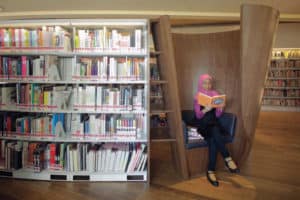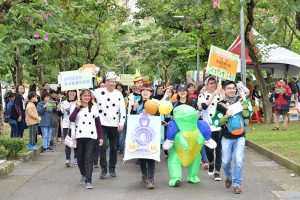
If you have paid any attention to cataloging matters over the past three years, you might have heard rumblings about something called the 3R Project, which is having a large impact on RDA cataloging.
RDA, or Resource Description and Access, is the successor to AACR2 (Anglo-American Cataloging Rules, second edition), the cataloging system developed nearly 50 years ago for the creation of card catalog records of print materials.
The diversity and nature of library holdings has of course evolved since then, and by the turn of the millennium there was general agreement in the cataloging community around the need for a greatly revised or altogether new standard. That new standard, RDA, debuted in 2010 and shifted the focus of cataloging away from record creation and toward creating quality metadata that can easily be shared and reused. It was envisioned as an international standard to support a range of data creation scenarios, from the card catalog to linked data.
Like many major changes to systems and processes, RDA stirred controversy. Some protested that it went too far in discarding established cataloging practices, while others argued that it did not go far enough. AACR had sparked its own controversy when it necessitated a major revision six years after its 1967 debut, when work began on AACR2. Similarly, RDA also faced a need for significant changes to both the standard and RDA Toolkit (the website designed to deliver RDA content) six years after its release.
The 3R Project
By 2016, several factors spurred the decision to pursue what would be called the RDA Toolkit Restructure and Redesign Project—dubbed 3R.
- As the number of translations grew (RDA had been translated into seven languages at the time) and policy statement sets also increased (to seven), it became clear that the rigid and dated structure of RDA content as it was displayed in the RDA Toolkit was not sustainable.
- In 2016, the International Federation of Library Associations and Institutions’ (IFLA) Library Reference Model (LRM) replaced RDA’s underlying Functional Requirements model, making it necessary to bring the standard into alignment with the new model.
- The toolkit’s user experience needed improvements to meet expectations for website performance.
Over the following four years, the structure of the toolkit data was rebuilt to make it more modular and flexible and to provide more efficient and reliable work processes for RDA editors and translators. The project introduced a responsive design for the RDA Toolkit, optimizing the site for tablets and mobile devices. It also brought the site into compliance with established accessibility requirements.
The redesign also included a new integrated display that allows users to view policy statements from the Library of Congress and other leading institutions alongside RDA instructions. As for the standard itself, the alignment with IFLA’s LRM introduced new entities—some familiar (place), some quite new (nomen)—as well as novel practices for key concepts, including aggregates and fictitious entities.
Among the 3R Project’s goals was optimization of RDA for international use and in linked-data environments. The emphasis on these two areas is based on a vision for future cataloging that will require greater sharing of metadata for more efficient creation of records but still allow for local practices to better meet the needs of library users. In short, the post-3R RDA is for those who want to catalog locally but share globally.
Challenges of the new toolkit
Toolkit users have raised concerns about the explosion of new elements—now more than 3,000 of them—without any hierarchy or order imposed. The RDA instructions are also considerably less prescriptive, with an infusion of options that might have some users’ heads spinning. But the most significant difference is likely the reorganization of the content so that RDA reads less like a cataloging manual and more like a data dictionary. Catalogers have long been used to the workflow-type presentation of instructions found in the AACR2 standard that was also carried over to the initial iteration of RDA.
These concerns are legitimate, and users are faced with conducting a close evaluation of the standard to determine how it can best meet their institutions’ and patrons’ needs.
So why expand elements? The decision was made primarily to remove relationship designators (such as author or composer) from the RDA appendices and transform them into full-fledged elements. Now a single designator such as creator has transformed into 10 different elements. The key point is that most catalogers will use only a small fraction of these elements in their work, but the elements themselves are necessary to maintain the integrity of the data model.
The infusion of options, including those explicitly labeled option, as well as those that are implicit (such as deciding to use a specific element or type of recording method), is critical to the support of diverse local practices found around the globe.
What to do
The changes put forward by the 3R Project may seem daunting but they are not insurmountable. Two important things to keep in mind: First, there is time. While the revised RDA is now the official version, there is no expectation libraries will immediately adopt the new guidelines and practices. The original toolkit remains online and accessible to all with an RDA Toolkit subscription. It will remain up for the foreseeable future, and users will be given a full year’s notice before the site is taken down, so there is no reason to panic.
Second, help is on the way. The redesign of the toolkit anticipated that community documentation would guide catalogers to the needed entities and elements, and influence which options should or should not be applied. This assistance may be provided through policy statements or user-created documents hosted on the RDA Toolkit, or even application profiles hosted in or outside of the toolkit.
Library of Congress and its Program for Cooperative Cataloging—a cooperative where members contribute bibliographic records and data under a common set of standards using bibliographic utilities—are already working on both policy statements and an application profile that will provide a foundation on which institutions can build their own policies. Expect a range of orientation and training materials and events to emerge in the next year to assist with the transition to the new RDA.
RDA is built to adapt to an environment where publishing practices and user expectations for access are continually evolving. The standard and the toolkit are now better suited than ever to support the continuation of established cataloging practices while also providing a pathway to new methods of bibliographic metadata creation.


